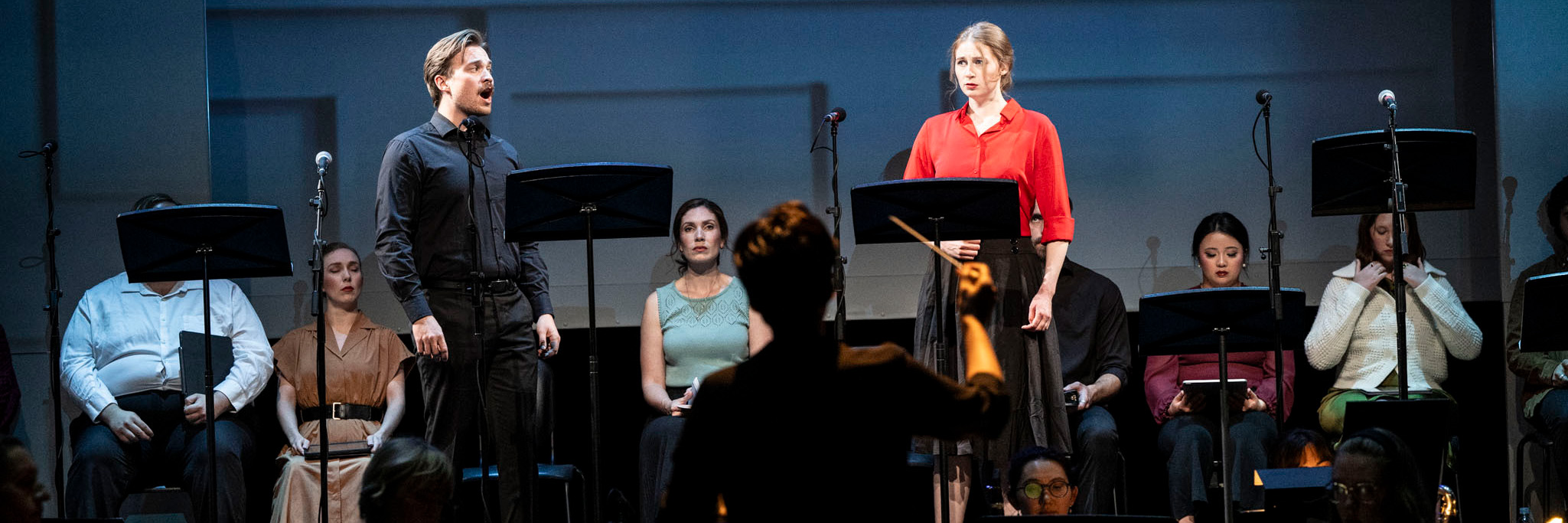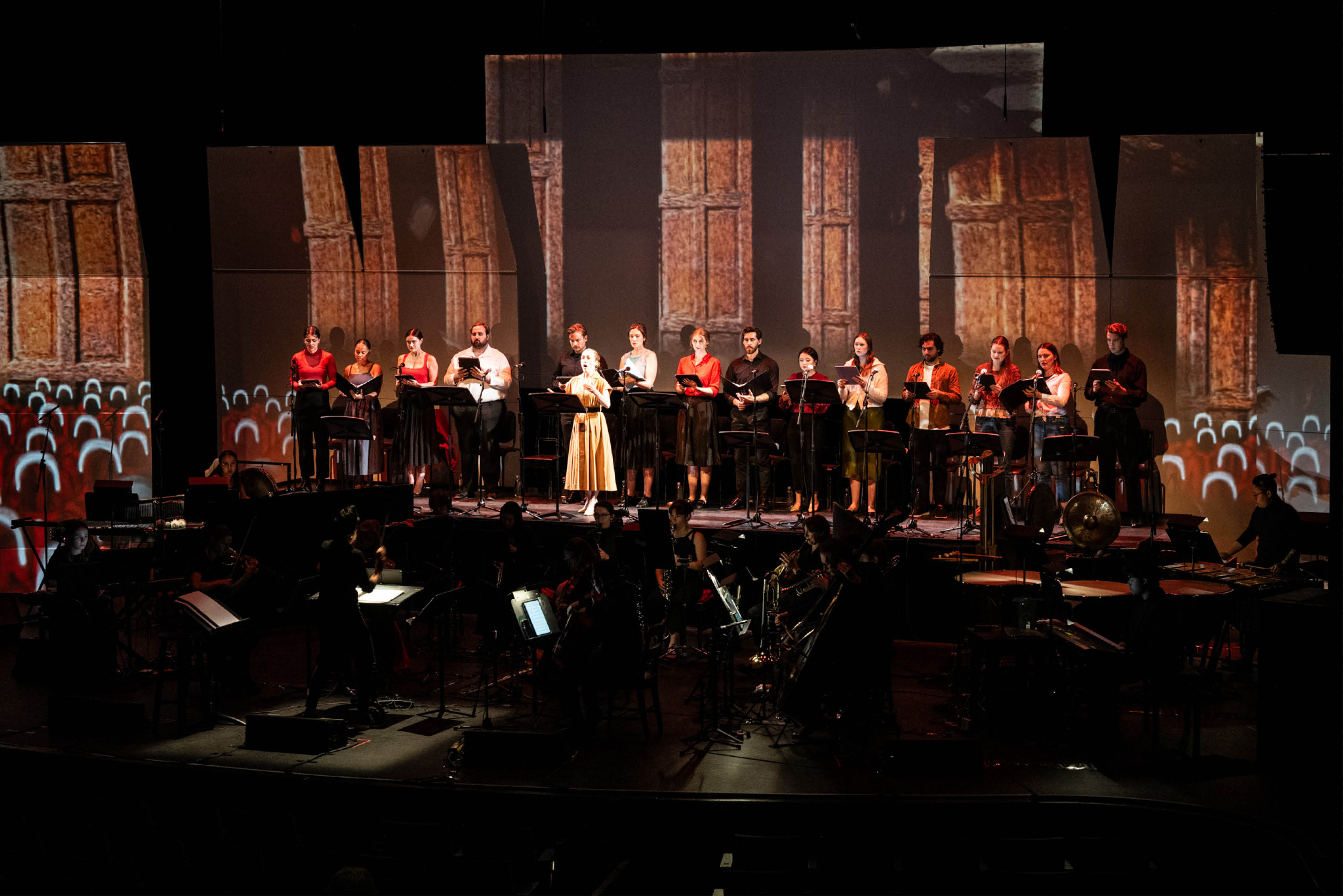One of the most iconic stories ever written in Canada is getting reimagined for the operatic stage at the Banff Centre for Arts and Creativity this month.
Margaret Atwood’s The Handmaid’s Tale was first turned into an opera in 1998 by the Danish composer Poul Ruders and librettist Paul Bentley, with performances taking place all over the world. Now, the participants in the Banff Centre’s Interplay program are working with a paired-down version of the score rearranged by composer Daniel Schlosberg in order to ensure the operatic version of the story can travel more freely.
The story of The Handmaid’s Tale – set in a future theocratic state called Gilead that forces women who can bear children to have them for those who cannot – is such that it can travel through all manner of mediums. For Brazilian-Canadian mezzo-soprano Camila Montefusco, who plays the central character Offred in the opera, the story came to her in a more traditional way.
“It was right when I arrived in Canada, actually,” she recalls. “I was presented the book first, and I completely fell in love with it in a very strange way.”
For Amanda Weatherall, who plays Offred in the time before Gilead – the story came to her in a more contemporary way. “I think I saw the TV show first,” she says, referring to the HBO series starring Elizabeth Moss as Offred.
Now, both Weatherall and Montefusco are the torchbearers for the story. Offred acts as a sort of narrator of events for her life in the time before Gilead and the present dystopian day, reliving over and over again the fulcrum moment where everything changed: her daughter kidnapped at the border, her husband struck down by guards, and herself being forced at gunpoint into natal servitude.
“I start from a very rational point of view where I find major scenes and major moments,” says Montefusco of the preparations she undertook to be able to tell the story, “and I can try to build the storyline also because the story goes back and forth in time. It's very difficult to look at beginning, middle and end.”

The show itself is rather hard to look at as audiences contemplate the horrors that women face in this society. Managing emotions is something that all cast members have had to wrangle with throughout the rehearsal process.
“I would say that I allow myself to feel all the feels before and after I sing,” says Montefusco about how she manages the emotions of the role alongside its musical demands.
“There’s a technique to feeling on stage. The most important thing for me is for the audience to feel, not me, necessarily. I am already going through the whole thing, singing this amazing music.”
The audience for The Handmaid’s Tale will not only be made to live the horrors of Gilead alongside the cast, but will also contemplate how similar the story is to events taking place in the real world today. These observations are ones that Weatherall notes the cast is holding gently, and are supporting each other as they attempt to do right by Atwood’s story.
“We all know we’re going through this together, and so we’ve worked together really well to make a very open space,” says Weatherall, shouting out the mental health supports that have been present for the cast throughout the rehearsal process.

While not an explicit political statement, performing The Handmaid’s Tale in 2025 certainly feels more prescient than in other years. Without the usual escapism that one expects from the theatre, audiences will instead take a clearer eye for the world away from having seen the production. “There’s a lot of value in seeing this kind of thing because it’s real,” notes Weatherall, “but it’s also a window in which you can look into [the world] from a different perspective.”
“I think they will understand why we should be telling this story right now,” adds Montefusco. “I believe cautionary tales exist for a very good reason, and I think if they are mentally prepared to take in the show – which is a lot – I think it’s 100% worth it.”
